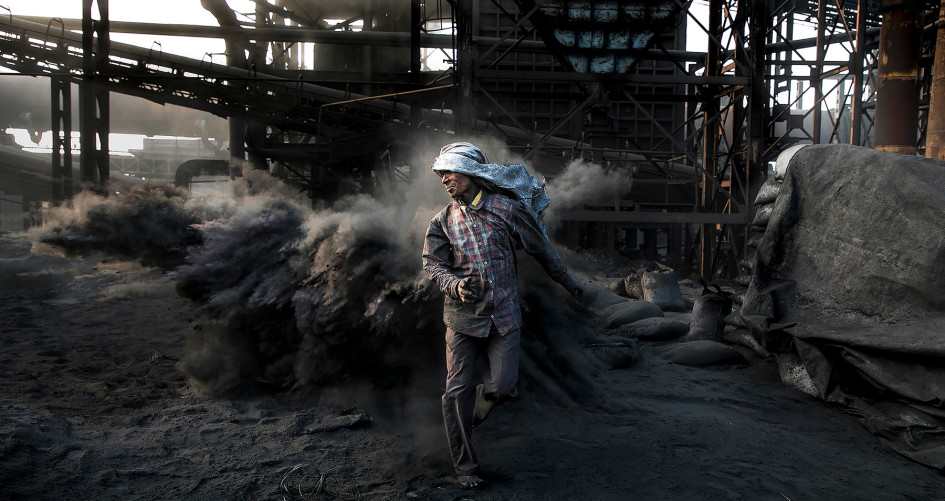First, the good news: the demand for new coal power plants has collapsed since the 2015 Paris Agreement, with more than 75 per cent of the planned coal plants being scrapped since the Paris Agreement was signed. It’s an uplifting statistic, and one that suggests coal’s days are numbered.
The past few weeks have also seen a number of other positive moves, including China’s President, Xi Jinping, declaring that China will stop financing coal-powered plants overseas, and “will step up support for other developing countries in developing green and low-carbon energy.” The move could affect 44 coal plants that were in line for Chinese state financing, according to Global Energy Monitor, a US-based energy think tank.
Coal has a long past; indeed prehistoric man used coal for heating and cooking, while it was also used by the Roman blacksmiths – who discovered it when the Romans invaded Britain – while some even wore it as jewellery. It was not until the Industrial Revolution that coal became a mainstay of development however, being used to power the steam engine, and then, for generating electricity. By 1700, Britain was producing 2.7 million tonnes of coal per year, a figure that rose to 250 million tonnes by 1900, mainly as a result of mining innovations and the invention of the steam engine, which could be used to drive power stations.

For decades coal powered much of the world’s electricity grids, seen as an inexpensive, reliable power source. Coal is relatively cheap to mine, effective at generating power and found across the world, which is why it has become so ubiquitous. Yet, while it may be plentiful, it is also incredibly polluting, and responsible for 46 per cent of carbon dioxide emissions worldwide. There are a litany of emissions from coal combustion: Sulfur dioxide, which contributes to acid rain and respiratory illnesses; Nitrogen oxide, which contributes to smog and respiratory illnesses; Particulates, which contribute to respiratory illnesses and lung disease, as well as smog; Mercury, which has been linked to neurological damage in humans; Fly ash and bottom ash, which are residues created when power plants burn coal and of course, carbon dioxide, which is the main driver of the climate crisis.
The damage coal does to both the environment and public health is why it is so vital that we move towards renewables, something that is happening with ever increasing pace.
A recent report from three climate groups – 3G, Global Energy Monitor and Ember – published in September, revealed that the use of coal is very much in decline.
The decline has been a result of the growing climate movement, regulatory efforts by governments and the fact renewable energy costs are falling, says the report’s co-author, E3G’s Research Manager – Coal Diplomacy, Leo Roberts. “The terrible economics of coal mean that building new coal power stations is a bad investment wherever you are in the world. More and more countries are realising this, cancelling their pipelines, and in many cases pivoting entirely away from new coal projects.”
The fall in the cost of renewables has been a key driver, as a report by IRENA earlier this year revealed: “The outlook till 2022 sees global renewable power costs falling further, with onshore wind becoming 20-27 per cent lower than the cheapest new coal-fired generation option.”
“Electricity costs from renewables have fallen sharply over the past decade, driven by improving technologies, economies of scale, increasingly competitive supply chains and growing developer experience,” says Michael Taylor, IRENA’s Senior Analyst for Renewable Energy Costs at the Innovation and Technology Centre in Bonn. “As a result, renewable power generation technologies have become the least-cost option for new capacity in almost all parts of the world.”
Six countries are responsible for 82 per cent of coal-powered plants: China, India, Vietnam, Indonesia, Turkey and Bangladesh, while the remaining 18 per cent is spread across 31 countries. “The implications of President Xi Jinping’s recent announcement of an end to Chinese support for overseas coal projects could spell the end for projects in many of these countries.” Roberts says. “In fact, 16 of these countries [out of the 31] – almost all in the Global South – have only one project remaining in their pipeline, without which they would be able to commit to no longer considering new coal power.”
COP26 President Designate Alok Sharma has called for COP26 to “consign coal to history” and Roberts is clear what he would like to see happen in Glasgow. “On top of the 44 countries that have already said they will no longer pursue coal, a further 40 no longer have a pipeline of projects and could therefore join them in making a public commitment to a coal-free future at COP26.”
Despite the challenges we face in moving to a ‘post-coal’ world, it is clear that momentum is growing, even among the outlier countries, still building new coal power plants. “There are positive signs and low-cost renewables are giving developed and developing countries a strong business case to power past coal,” Taylor says. “The newly added renewable projects in 2020 will save emerging economies up to $156 billion over their lifespan. Cost savings come in addition to economic benefits, job creation, health benefits and reduced carbon emissions – and ultimately avoiding stranded assets caused by fossil fuels investments.”

This is echoed by Roberts: “In about three quarters of the world, renewables are cheaper than keeping existing coal plants operating,” he says. “By 2030, that will be the case worldwide. The point we are trying to hammer home is that there is an inevitability to the global structural transformation away from coal. There is no logical argument for building new coal power stations, and increasingly there’s no logical argument for keeping the existing coal power plant fleet running as it is just too expensive, too polluting and too costly given the externalities to the healthcare system, for example. That inevitability should be recognised by governments, financiers and civil society and the private sector as well.”
